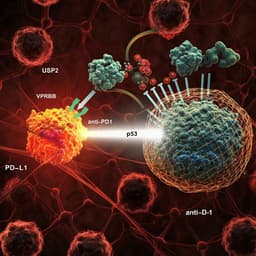
Biology
CRISPR/Cas9: implication for modeling and therapy of amyotrophic lateral sclerosis
Y. Shi, Y. Zhao, et al.
Delve into the groundbreaking research on Amyotrophic lateral sclerosis (ALS) as recent genomic advancements reveal new therapeutic strategies and models. This review, conducted by Yajun Shi and colleagues, explores the evolution of gene editing tools and the promising role of CRISPR/Cas9 in ALS research.
~3 min • Beginner • English
Related Publications
Explore these studies to deepen your understanding of the subject.







